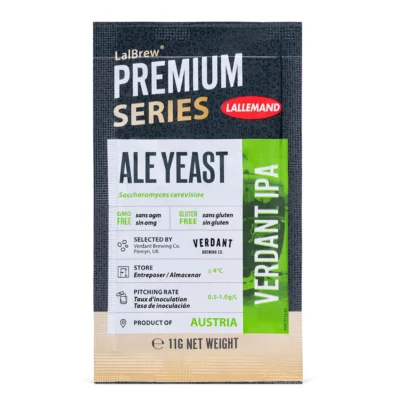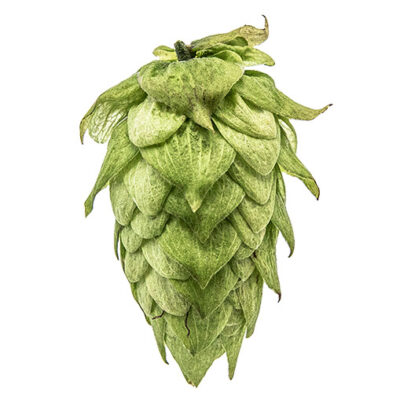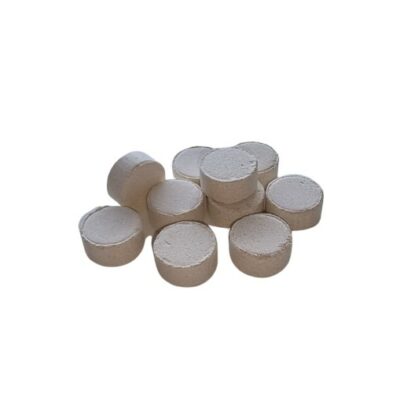As a homebrew enthusiast and beer lover, I can’t emphasise enough how great a nice clear beer looks. One of the best methods to achieving this clarity is by using gelatin as a fining agent — it works wonders!
Over the years, I’ve found gelatin to be one of the best ways of achieving a clearer beer, in this article I will explain how to use gelatin in beer and why it works.
Process Summary
- Add 1 teaspoon of gelatin to 5 gallons of cold beer a few days before packaging.
- Dissolve the gelatin in distilled water without heating it beyond 70°C.
- Let the gelatin solution sit in the fermenter or keg for 2-3 days.
- Ensure the beer is cold crashed at 0-4°C before adding gelatin for best results.
- Avoid using too much gelatin, which can strip flavor and body from your beer.
- Properly sanitize equipment to prevent contamination.
- Allow the gelatin to bloom in cold water for 5-10 minutes before heating it.
- Do not shake or agitate the beer after adding gelatin.
That is a very quick overview; read on if you want more detail.
Important Info
- Adding gelatin to cold beer a few days before packaging can help achieve clarity
- Dissolve and heat gelatin before adding to your fermenter or keg, avoid boiling the solution
- Be cautious about the amount of gelatin used and avoid adding it to warm beer to preserve taste and body
This post contains affiliate links. We received a small commission if you purchase through these links.
How To Use Gelatin For Fining Beer
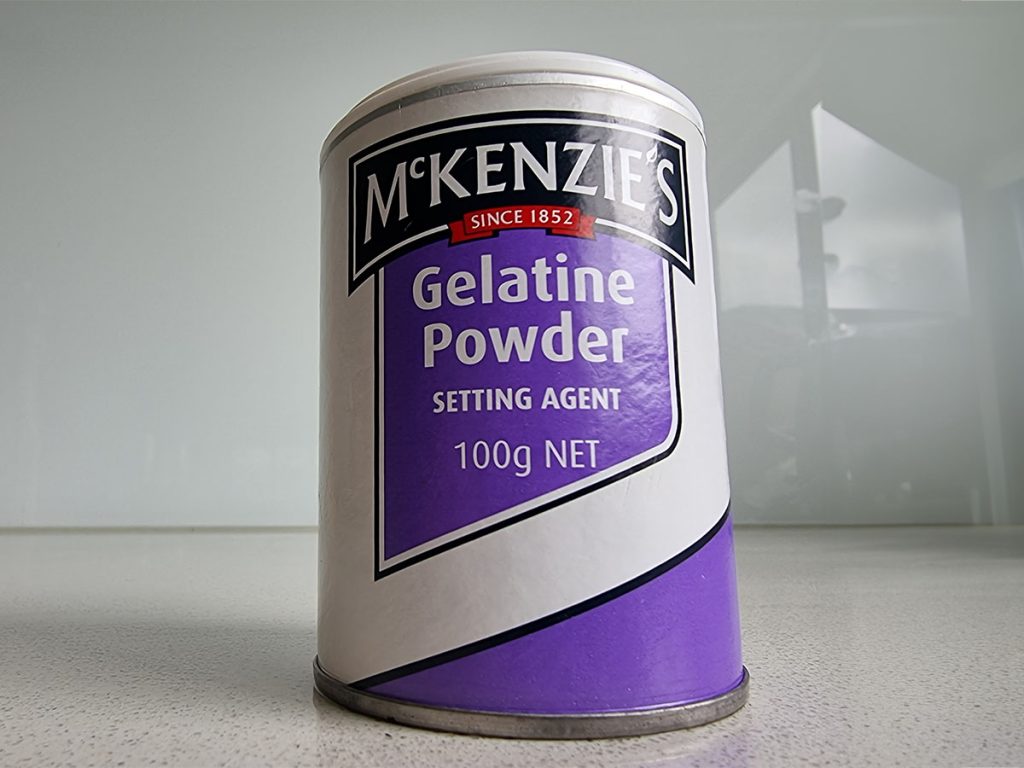
What You Will Need
Before starting, ensure you have the following items on hand:
- Unflavored gelatin powder or sheets (without additives)
- Distilled water (to prevent contamination)
- Measuring spoons (for measuring the gelatin)
- Pot or microwave-safe container (to heat the gelatin solution)
- Thermometer (to check the temperature of the gelatin solution)
- Sanitised fermenter or keg (for adding the gelatin solution to the beer)
When To Add Gelatin To Beer
The ideal time to add gelatin to your beer is a few days prior to packaging or serving. Make sure the beer’s fermentation process is complete and that it has been cold crashed. Cold crashing, which involves lowering the beer’s temperature to 0-4°C for a couple of days, assists in removing the majority of yeast and sediment.
Add gelatin to cold beer to allow better binding with remaining haze particles. Otherwise, the beer may not clear as effectively or may take longer to do so.
Prepare The Gelatin
To prepare the gelatin, follow these steps:
- Measure the required amount of gelatin based on your batch size. Typically, 1 teaspoon of gelatin powder or one sheet of gelatin per 5 gallons of beer is sufficient. Using excessive amounts may risk stripping the beer’s flavour and body.
- Add the gelatin to a small quantity of distilled water in a pot or a microwave-safe container. Sprinkle the gelatin evenly over the water, allowing it to dissolve for around 5-10 minutes. This process, known as “blooming”, eases further dissolving.
- Carefully heat the gelatin solution until it reaches approximately 65°C. Avoid boiling, as this may damage the gelatin and hinder its performance. Stir frequently while monitoring the temperature using a thermometer, ensuring it does not surpass 70°C.
- Once heated, the gelatin solution is ready to be added to your beer.
How To Add The Gelatin To Your Homebrew
To add the gelatin solution to your homebrew, proceed as follows:
- Sanitise your fermenter or keg and transfer equipment.
- Ensure the beer in your fermenter or keg has been cold crashed for at least 24 hours.
- Gently pour the gelatin solution into the fermenter or keg, taking care not to splash or aerate the beer excessively.
- If you want to, you can stir the beer with a sanitised stirrer VERY GENTLY. Avoid splashes and introducing unnecessary oxygen.
- Allow the fermenter or keg to sit cold for another 2-3 days, or as needed until the beer clears significantly.
- Finally, rack or bottle your beer, leaving the sediment behind. Enjoy your clear and bright homebrew!
With the correct approach and the use of Whirlfloc tablets, you can enjoy the benefits of clear beer without sacrificing quality or taste.
Mistakes To Avoid When Using Gelatin in Homebrew
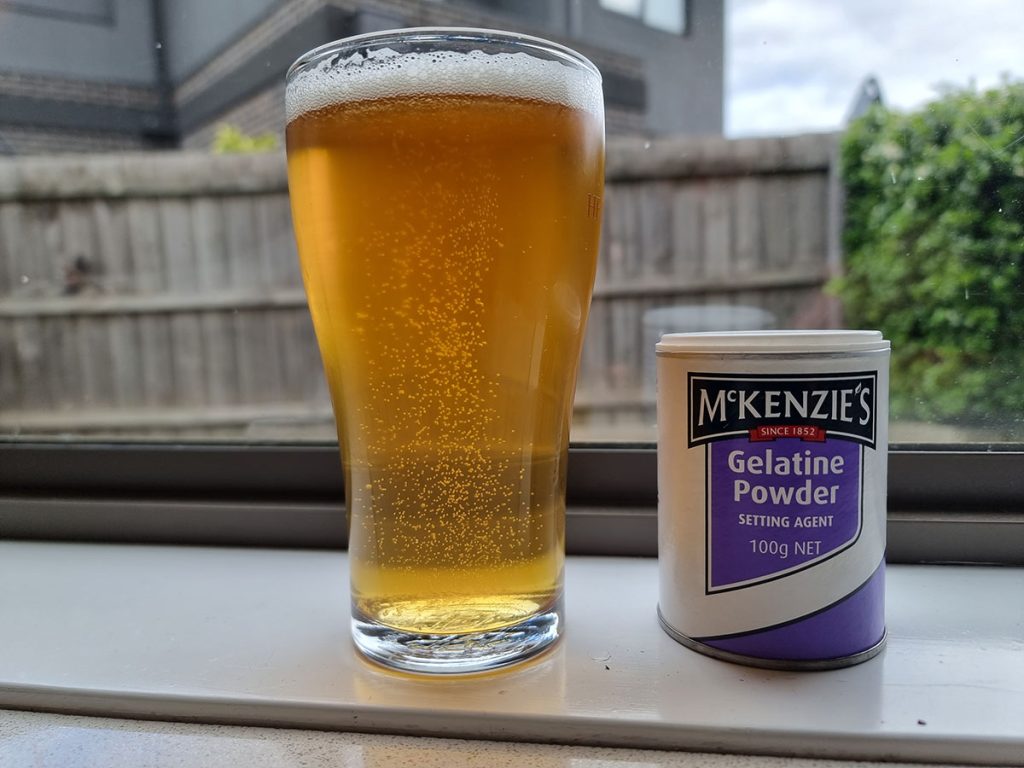
In this section, we’ll go over the common mistakes you might come across when using gelatin for fining your beer. Avoiding these common mistakes will ensure that your brews come out looking and tasting great.
Using Too Much Gelatin
First off, be mindful of the amount of gelatin you’re using in your homebrew.
Using too much can strip your beer of its natural flavour, body, and head retention. What’s more, your brew might end up too clear and thin, losing the complexity that makes it a beaut.
Stick to 1 teaspoon (5 grams) of gelatin powder or one sheet of gelatin for every 19 litres of beer.
Adding Gelatin To Warm Beer
Next, make sure you’re using gelatin on cold beer. Adding gelatin to warm beer isn’t as effective and may take longer to clear.
The sweet spot for adding gelatin is when your beer’s temperature is between 0°C and 4°C.
Not Cleaning and Sanitising Properly
Cleaning is also a big part of the brewing process, so don’t forget to sanitise your equipment before using gelatin.
Without proper sanitisation, you risk contamination from bacteria and wild yeast, ruining your brew.
So, make it a habit to give your fermenter, keg, pot, thermometer, and other equipment a good clean and sanitise before working with gelatin.
Not Disolving Gelatin Properly
Dissolving the gelatin properly is another crucial step. You don’t want those pesky clumps mucking up your beer.
Start off by sprinkling gelatin evenly over cold water and let it bloom for about 5 to 10 minutes. Then, slowly heat it and give it a good stir till it reaches about 65°C. Just don’t boil the solution – that can stuff things up!
Not Giving The Gelatin Time To Work
Lastly, give the gelatin enough time to work its magic. It takes at least 2 to 3 days for the gelatin to bind with haze particles and settle down in your fermenter or keg.
It might pay off to cold crash your beer both before and after adding gelatin, speeding things along.
What Is Gelatin And How Does It Make Beer Clearer?
Gelatin is a protein from animal collagen found in connective tissues like bones, skin, cartilage, and tendons. When this collagen is heated and purified, it becomes a clear, odourless substance that forms gels when mixed with water.
So how does gelatin help clarify your beer? Let me explain. The short answer is right below, the more detailed answer follows that;
How Gelatin Makes Your Beer Clear
- Gelatin acts as a fining agent in beer brewing, helping to remove haze and cloudiness by binding with unwanted particles.
- When added to cold beer, gelatin forms a network that traps haze particles, creating heavier clumps that sink, clearing the beer.
- Using gelatin can improve the beer’s flavor and mouthfeel by reducing harshness or bitterness.
- Unflavored gelatin is considered the best choice for brewing.
- Achieving clear beer with the help of gelatin is a mark of superior brewing skills, enhancing the beer’s appearance, flavor, and texture.
As a home brewer sometimes we want a bit of haze in our beers, but at other times we want a nice clear brew. This is where gelatin steps in.
Acting as a fining agent, gelatin assists in removing unwanted particles from your liquid gold. It has a positive electrical charge, allowing it to attract and bind with negatively charged particles such as proteins, tannins, and yeast that are responsible for the haze and cloudiness in beer.
When you add gelatin to cold beer, it forms a gel-like network, trapping those pesky haze particles and creating larger clumps that are heavier than the liquid.
These clumps then sink to the bottom of your fermenter or keg, leaving behind a clearer and brighter beer. In my experience as a brewer, I’ve found that using gelatin can also improve the flavour and mouthfeel of your brew, removing some of that harshness or bitterness on the palate.
In my five years of home brewing, I’ve tested my fair share of fining agents, and I’ve always come back to unflavoured gelatin. Trust me, you don’t want to use flavoured gelatin for this process.
Frequently Asked Questions
How long does it take for gelatin to clear my beer?
Gelatin usually takes a couple of days to clear your beer. Of course, the exact time depends on various factors, but in my experience, you’ll notice a significant difference after 48 hours. Just remember to be patient and let the gelatin work its magic.
Should I add gelatin to the fermenter or keg?
In my time brewing, I’ve found that you can add gelatin to either the fermenter (primary or secondary) or directly to the serving keg. Personally, I prefer adding gelatin to the keg, but both methods work equally well. It really comes down to your personal preference and convenience.
Are there alternatives to gelatin for fining beer?
Absolutely! There are a few alternatives to gelatin for fining your beer. Some popular options include using Irish moss, isinglass, or even biofine clear. These alternatives work well, but their effectiveness and usage may vary depending on your recipe. I’ve tried all of them, but gelatin remains my go-to choice for most of my brews.
How much gelatin should I use in my beer?
For a typical 19 litre batch, I use about 1 teaspoon of gelatin. This amount does the trick for me, but you might need to adjust it slightly depending on factors such as your beer’s haze level or if you’re working with a different batch size. Just keep in mind that too much gelatin can negatively affect the flavour of your beer, so it’s best to start with a smaller amount and adjust accordingly.
At what temperature should gelatin be added to beer?
The temperature at which you add gelatin to your beer will heavily depend on the method you choose. If you’re adding gelatin to the fermenter, I reckon that adding it when the beer’s temperature is around 19°C is a good option. However, if you’re adding gelatin directly to the keg, it’s better to do so when the beer is chilled, ideally at 4°C or below. This promotes faster clearing and gives you better results overall.
Is Gelatin Vegan Friendly?
Gelatin is not considered vegan or acceptable for vegetarians due to how it is produced. It is made from collagen extracted from animal bones and skins, primarily from cattle and pigs. The production of gelatin involves processing animal body parts, which goes against the ethical principles of veganism to avoid consuming any animal products.




